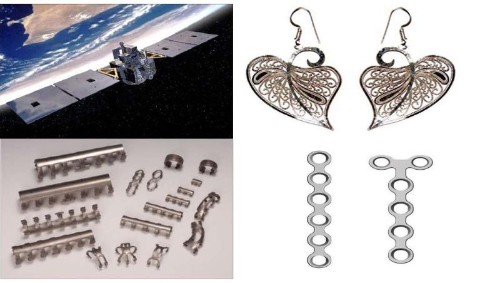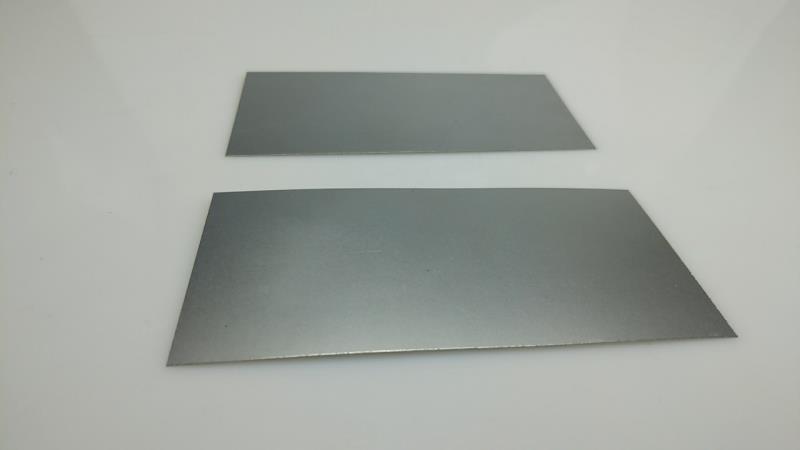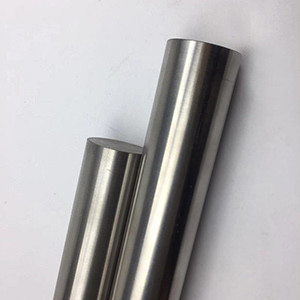Nitinol Sheet Description
Nitinol, well known as shape memory alloy, demonstrates a unique ability to recover its initial shape after deformation through a reversible thermo-elastic phase transformation, it allows Shape Memory Alloys to recover large strains, either spontaneously (pseudo elasticity) or through an increase in temperature (Shape Memory Effect).Nitinol Sheet is a unique form of shape memory alloys because its shape allows for additional design opportunities. Unlike wire and tube, the sheet is a two-dimensional structure, which overcomes a set of design obstacles. Furthermore, a flat NiTi Sheet enables designers to perform operations that cannot be done on the wire or tube, like stamping, punching, and deep drawing.
XOT is a leading supplier of Nitinol Alloy products. All custom sizes and finished parts can be produced quickly to the highest industry standards.
Specifications for our nickel titanium alloy sheet
| Product Name | Nitinol Sheet |
|---|---|
| Material | Nickel: 54.5-57 wt%, Balance: Ti |
| Specification | ASTM F2063-12 |
| Af Temperature | -10°C to 120°C |
| Size | 0.004”- 0.2” x W x L |
| Surface | Cold-rolled, pickled, or Mirror shiny |
| Shape | Rolls, Flat piece |
Alloy Type
Two way-Shape Memory
Nitinol sheet that restore high-temperature phase shape when heated, and restore cooling temperature phase shape when cooled
One way-Shape Memory
Nitinol sheet deform at lower temperature, restore the shape before deformation when heated. It only shows shape memory phenomenon when heating
Processing
Nitinol ingots are melted using combinations of vacuum induction melting and/or vacuum arc remelting. Billets are forged and hot rolled to create intermediate forms which are further fabricated into bars, coils, and plates. ASTM F2063 is the standard that covers the chemical and metallurgical requirements for wrought nickel titanium in such mill forms. Coils are further drawn to make smaller diameter wires and plates are rolled down to make thinner sheet. Bars are gun-drilled to create a “tube hollow”, which are then drawn into tubes. Gun-drilling is a necessary evil. It immediately reduces the effective yield of the process as it removes a considerable amount of material that cannot be reclaimed—think bar weight versus tube hollow weight.
Control of oxygen and carbon content in the melt is critical because of the formation of titanium oxides and carbides. These hard inclusions act as discontinuities in the matrix. These have been the subjects of numerous studies on device failure and fatigue strength.
The combination of cold working and heat treatment (thermomechanical processing) is critical to attaining the desired properties in the material. During cold working fabrication operations, such as drawing or rolling, Nitinol alloys work harden very rapidly. If the material is not annealed after a certain amount of cold work, the strength rises to the point where the fracture strength is reached on further deformation and failure occurs.
Heat treatment also used to set the final shape in the Nitinol component. If the Nitinol has a reasonable amount of cold work in it (of the order of 30 percent or more), temperatures of 400° to 500°C with appropriate dwell times will create a straight, flat, or shaped part. The term “shape setting” is commonly used for this process and shaped parts are created using bespoke fixtures. Some common heat treatment methods are strand annealing (for straight wire and tubing), box furnace, molten salt bath, and fluidized bed. Another objective of heat treatment is to establish the final mechanical properties and transformation temperatures in the Nitinol component. After the material has been cold worked, the proper heat treatment will establish the best possible shape memory or superelastic properties in the material while retaining enough of the residual cold work effect to resist permanent deformation during cycling. It also helps to set the Active Af of the parts.
Nitinol tubes, Nitinol sheets, and Nitinol wires are subject to a variety of processing operations to make a device. Nitinol responds well to material removal by abrasive techniques such as centerless grinding but is difficult to machine by milling or turning. Laser and electrical discharge machining are common cutting methods for tubing. Additionally, sheet can also be waterjet cut or photo-chemical machined.
Nitinol Sheet Application
Nitinol sheet is popular because it offers design flexibility not available with other forms—designing products flat and then forming it to make devices. Sheet can be produced with very tight thickness tolerances and uniform thickness control across the surface. This high process capability benefits downstream process optimization and automation— consistent starting sheet thickness, controlled post-processing will yield predictable final dimensions.

Nitinol sheet is widely used in aviation, aerospace, machinery, electronics, chemical, energy, construction and other projects, civil and medical fields because of its excellent characteristics, such as biocompatibility, ray opaque, nuclear magnetic resonance (NMR) had no effect, mechanical properties, corrosion resistance, shape memory effect, and superelastic damping.
XOT manufactures variety of Nitinol (Ti-Ni alloy) products. And We can also program the custom shape when heating titanium nickel alloy sheet, please contact us for any needs on nitinol.


